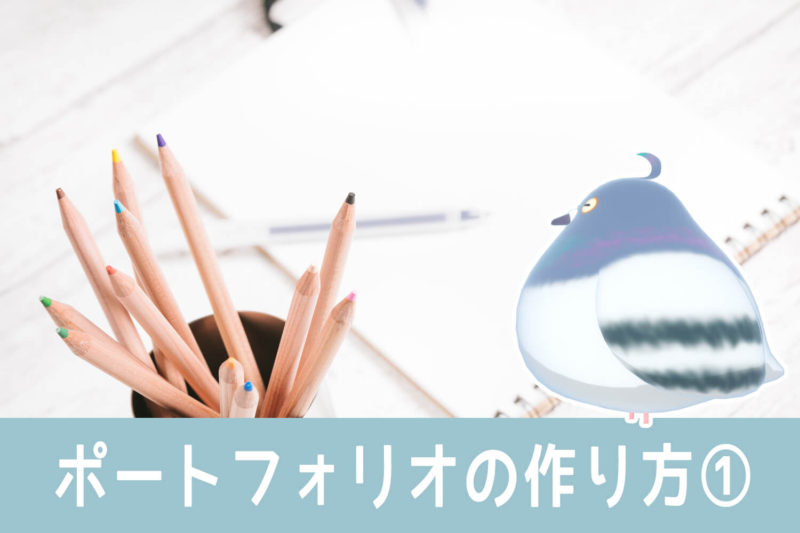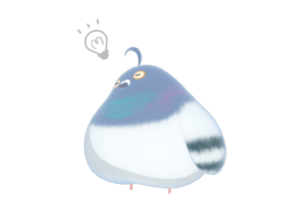
What is the number one requirement to become a 3DCG artist?
If asked this, Toha would say portfolio.
To become a 3DCG artist, it doesn’t matter what your education or work history is. Your portfolio is super important.
Not that the portfolio is everything, but if the portfolio is not good, there is a big chance that you will be out of the game from the very beginning.
Toha has created three 3DCG portfolios for employment.
Since becoming a 3DCG artist working for a company, I have been on the side of looking at submitted portfolios.
In this article, I will write about what I think is an important “How to think” when creating a portfolio.
What is a Portfolio? Know its role

For a 3DCG artist, a portfolio is like a compilation of multiple CG works filed together. More than just a compilation of works, a portfolio has an important role to play.
What is the role of the portfolio?
Communicate “what you can do now and what you have done so far” to the person you are looking at.
Here it is.
A portfolio is essential if you want to get a job as an artist, not only in 3DCG. I think it is the same when you apply for a job at a company or when you want to get a job as a freelancer.
Let me give you an analogy.
One client is looking for an artist who can be asked to create a 3DCG of a robot.
There are 10 artists in front of that person who can be asked to do the job.
9 of the 10 artists brought their portfolios, but only one artist did not have his portfolio.
When choosing an artist to work with from among these 10, who do you choose?
If Toha is the client, I can’t choose a designer who doesn’t at least have a portfolio.
If a designer doesn’t have a portfolio, you don’t know what he/she can do.
I don’t know = I can’t make a decision.
Even if one person without a portfolio is very good at making 3DCG robots, they will not get a chance to appeal if they are not an option from the beginning.
That is why a portfolio is an essential item.
And, the role of the portfolio is to communicate to the viewer what you can do now and what you have done so far.
Think about who will be looking at your portfolio

A portfolio is an item that communicates “what you can do now and what you have done so far” to the people who see it. It is not for you to look at, but for someone else to see.
When creating a portfolio, it is very important to “think about the viewer”.
Let’s think about the robot 3DCG client I mentioned earlier.
The client wants to commission a 3DCG production of a robot.
If possible, we would like to work with an artist who has experience in past productions and is good at robot 3DCG.
If I’m going to create a portfolio to show this client,
I better have some 3DCG work on robots.
The client has other work to do and is busy.
It seems unlikely that we will have time to take the time to look at every page of every portfolio, all the way through to the end.
Thinking about the busy client,
I like to put the 3DCG of the robot on the beginning page.
The client is busy going through the artists’ portfolios. Every artist is thinking about the client and including 3DCG work for the robot.
In such a situation, if you have a portfolio that has a lot of hard-to-read explanations in fine print, or if you have a portfolio with clear, concise explanations, which would the client want to see more?
If you think about the client,
I like to make the layout and description easy to read and understand and arrange.
As you think about the people who will be looking at your portfolio, you will naturally decide which works to include in your portfolio, the order in which they should appear, the layout, and so on.
What is important here is whether you thought properly about the viewer.
Bottom line, how big should the font size be, how much text, and how many pages should the portfolio be? You might ask.
But there is no 100% correct answer for a portfolio.
If you have created your portfolio with the viewer in mind and paid attention to the order and layout of your works, then I think it is an “OK” portfolio.
I believe that the results of our thinking are properly reflected in the contents of our portfolio.
Think about what you want to convey most in your portfolio

What we want to convey in our portfolio is “what I can do now and what I have done so far.
How can we get the message across?
I think this can be conveyed by “actually showing them the work you have created.
Seeing is believing.
Rather than explaining in words what you are good at, it is better to show what you are good at by actually doing it.
Then put everything you’ve ever created in your portfolio!
You may be like. Of course, it is “OK!”
But I mentioned earlier about “thinking about the person who will be looking at your portfolio”. If you include that many works, the number of pages in your portfolio will be quite large.
Considering the person you are dealing with, you may want to narrow down the pieces you include a bit.
And as much as you think about the other person,
with that portfolio, It is also important to think about “what you want to convey most”.
When you have many things you are good at and many accomplishments to date, it is natural to want to make them known as much as possible.
But I have 100 things I’m good at! And what happens if I tell you 100 things I am good at all at once?
The person being told, “After all, what is it that this person is good at?” and then they become confused.
To convey the most important message, it is also necessary to dare to convey less information.

Now, if you think about what you want to convey most in your portfolio…
Please include the work that best conveys this on the first page of your portfolio.
The first page of a portfolio is the first impression of that portfolio.
The first impression of the portfolio is the first impression of the designer himself/herself.
First impressions are quite important.
It also makes the image easier for people to remember and recall.
The primacy effect is a psychological effect in which “the first characteristics presented are more likely to remain in memory (impression) and have a greater influence on later evaluations.
Source: What are the beginning effect and the new proximity effect?
So on the first page of the portfolio, I want to include the work that conveys the most what I want to convey the most.
If you don’t have such work yet…you can try to create a new one from now on.
I’ll think about it again with the robot 3DCG client.
The job the client is asking me to do is to create a 3DCG of a robot.
What you are best at and what you want to do most is to create 3DCG of animals.
You have never made a 3DCG of a robot, but you have the best and most confident 3DCG of an animal.
In this case,
I think the first page of your portfolio should be your best and most confident 3DCG of an animal.
What the client wants is a 3DCG of the robot, and as a result, he may not ask for the job this time.
But is that a bad outcome?
Unless I wanted to do this robot 3DCG work, what I am good at and want to do is to make 3DCG of animals.
If a robot 3DCG is offered a job under the pretense of being good at it, wouldn’t that be a worse outcome?
I don’t enjoy making 3DCGs of robots, I can’t make them well, and the client may not be satisfied.
And even if I had not been asked to work on the robot this time, the client might have been left with the impression that I am an artist who specializes in animal 3DCG.
When there is a job to make 3DCG of animals at another time, the client may remember “an artist who is good at 3DCG of animals”.

On the first page of your portfolio,
I would like you to include the work that best conveys what you most want to convey.
For this reason, it is important to think about what you want to convey most in your portfolio.
Is it what you are best at communicating? Or what do you like the most? Or is it something you are not so good at but would like to do the most?
If you are good at, like, and want to do the same thing, it is the strongest.
“I’m still not sure what I’m good at or what I want to do!” I think there are times when you are not sure.
In such cases, I try to pick one favorite piece that I have made so far that I think turned out the best.
How about making that work on the first page of your portfolio?
Summary: If know how to think of a portfolio, know how to make one

In this article, I wrote about a “way of thinking” that I think is important in portfolio creation.
When creating a portfolio, it is most important to think properly about two things:
what the viewer is looking at and what you want to convey most.
The reason is that as you think about these two things, you will gradually understand how to create a portfolio.
The client of the robot 3DCG, which I have used as an example many times in this article, is a fictitious person.
For those who are going to create their portfolios, please consider replacing the fictitious client with a real “company you want to work for” or something similar.
I’ve thought about it, but I’m not sure if this is the right thing to do… you may be worried.
Don’t worry! There is no such thing as a 100% correct portfolio, to begin with!
And if a portfolio has been created after much thought and consideration, then I think it will be “OK” in terms of its content.
If you’ve thought about them and what you want to convey, and you’ve made it right, but it doesn’t work…
In this case, I think it is just a situation where “the client wants 3DCG of a robot and I am good at 3DCG of animals”.
There is no need to feel depressed that your portfolio is not good enough.
I am sure someone will be interested in your portfolio in time.

I was depressed when I was rejected by companies with the portfolio I worked so hard on. But now I think so.
Now, in How To Make CG Portfolio 2), I write about “things you don’t have to think about” and “things you do without thinking about” when creating a portfolio.
Let’s move on to the next article.
Incidentally, the reason why Toha came up with the idea that “finding a job is also a matter of compatibility and timing”, I wrote at What Are 3 Things Absolutely Need To In Life?
If you are interested, please read it 🙂





- Coments - コメント一覧